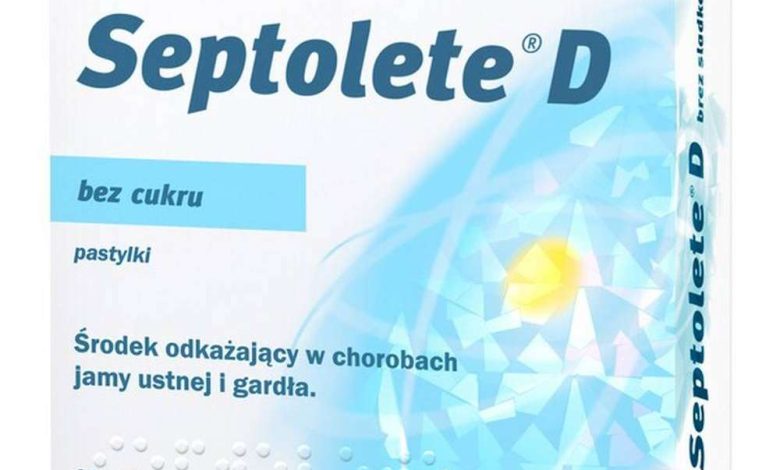Septolete D: instructions for using the medicine, structure, Contraindications

Active material: benzalkonium chloride, levomenthol, peppermint oil, eucalyptus oil, timol
When ATH: R02AA20
CCF: The preparation with antimicrobial and anti-inflammatory action for local application in an ENT-practice and stomatology
ICD-10 codes (testimony): J00, J02, J03, J04, J31, J35.0, J37, K05, K12
When CSF: 24.01.06.01
Manufacturer: KRKA d.d. (Slovenia)
Septolete D: dosage form, composition and packaging
◊ Pastilles without sugar round, lenticular, yellow color.
| 1 pastilka | |
| benzalkonium chloride | 1 mg |
| levomenthol | 1.2 mg |
| peppermint oil | 1 mg |
| eucalyptus oil | 600 g |
| timol | 600 g |
Excipients: maltitol liquid, maltitol, glycerol, mannitol, castor oil, refined, silicon oxide, magnesium stearate, quinoline yellow dye (E104), Titanium dioxide (E171), Capone 600, povidone.
10 PC. – packings Valium planimetric (3) – packs cardboard.
Septolete D: pharmachologic effect
The preparation with antimicrobial and anti-inflammatory action for local application in an ENT-practice and stomatology.
Pastils Septolete® D is a combination of antiseptic quaternary ammonium compounds – benzalkonium chloride and natural active substances – menthol, essential oil of peppermint, eucalyptus essential oil, timol, which increase the activity of the antiseptic and improve its taste. Pastilles have a deodorizing effect.
Benzalkonium chloride – antiseptic, is effective primarily against gram-positive bacteria. Also has fungicidal action against Candida albicans and certain lipophilic viruses.
Menthol and Peppermint essential oil relieve pain and subjective discomfort, such as a burning sensation or pain when swallowing.
Thymol has antiseptic, which enhances the effectiveness of the drug.
Eucalyptus essential oil reduces the secretion of mucus in the upper airways and makes breathing easier.
Septolete D: pharmacokinetics
Data on the pharmacokinetics are not provided.
Septolete D: testimony
- infectious and inflammatory diseases of the mouth and throat.
Septolete D: dosing regimen
It should dissolve slowly in the oral cavity 1 lozenge every 2-3 no.
Adults it is recommended to take no more 6-8 lozenges / day.
Children under the age of 4 years it is recommended to take no more 4 lozenges / day.
Children under the age of 10 years it is recommended to take no more 6 lozenges / day.
Septolete D: side effects
Rarely: indigestion (dyspeptic disorders, diarrhea), allergic reactions.
Septolete D: Contraindications
- children's age up to 4 years;
- hypersensitivity to the drug.
Septolete D: Pregnancy and lactation
Use of the drug during pregnancy and breastfeeding is possible only under medical supervision.
Septolete D: Special instructions
Pastils Septolete® A patient can apply, have contraindications or restrictions on sugar-containing products reception.
Patients with diabetes should be informed, that each wafer comprises 0.6 Mr. maltilol. For maltilol need insulin metabolism, but since the hydrolysis and absorption in the gastrointestinal tract is slow, dosage adjustment of hypoglycemic agents are not required.
Septolete D: overdose
Data on overdose are not provided.
Septolete D: drug interaction
The data on drug interactions of the drug is not provided.
Septolete D: terms of dispensing from pharmacies
The drug is resolved to application as an agent Valium holidays.
Septolete D: terms and conditions of storage
The drug should be stored out of reach of children, protected from light and moisture at a temperature no higher than 25 ° C. Shelf life – 3 year.
